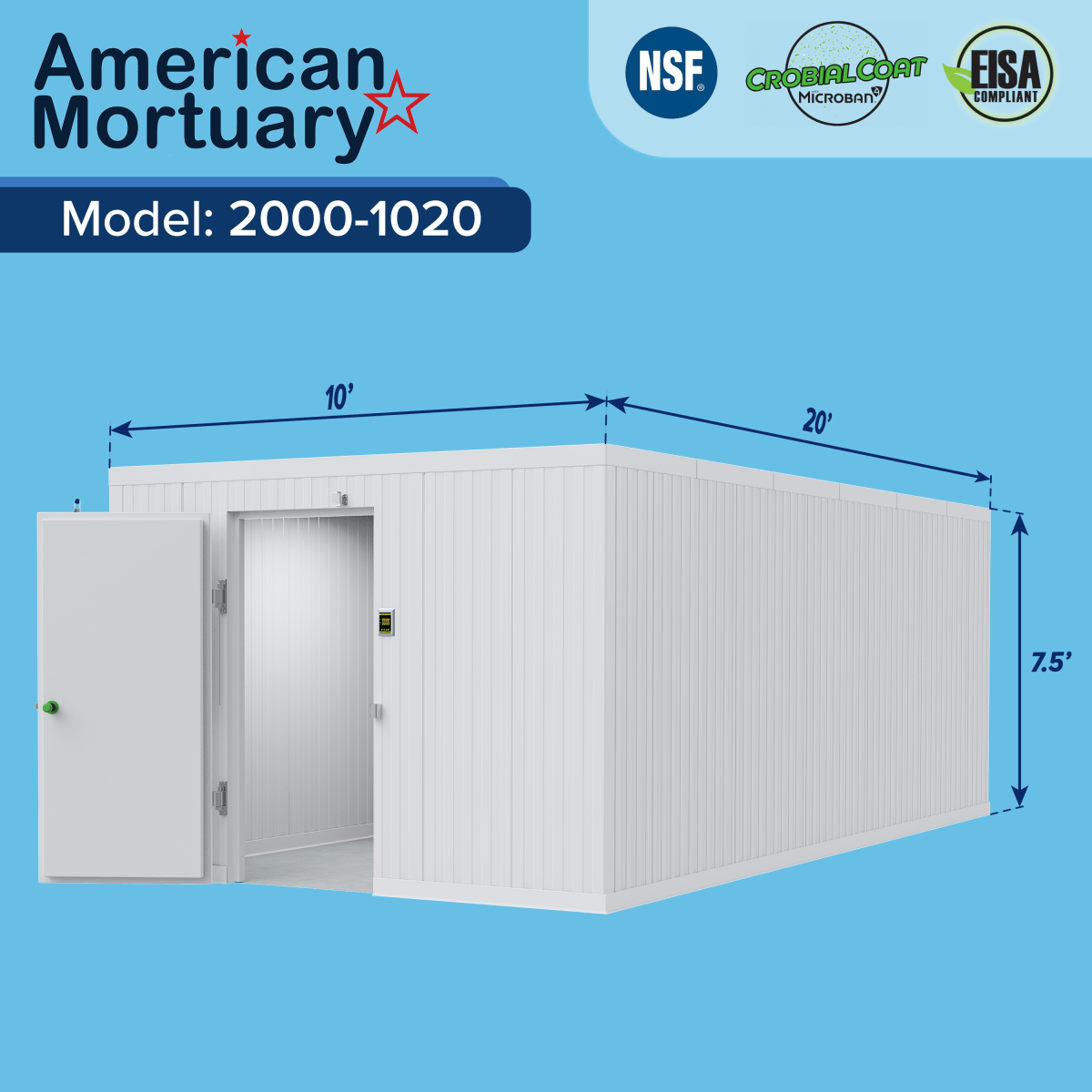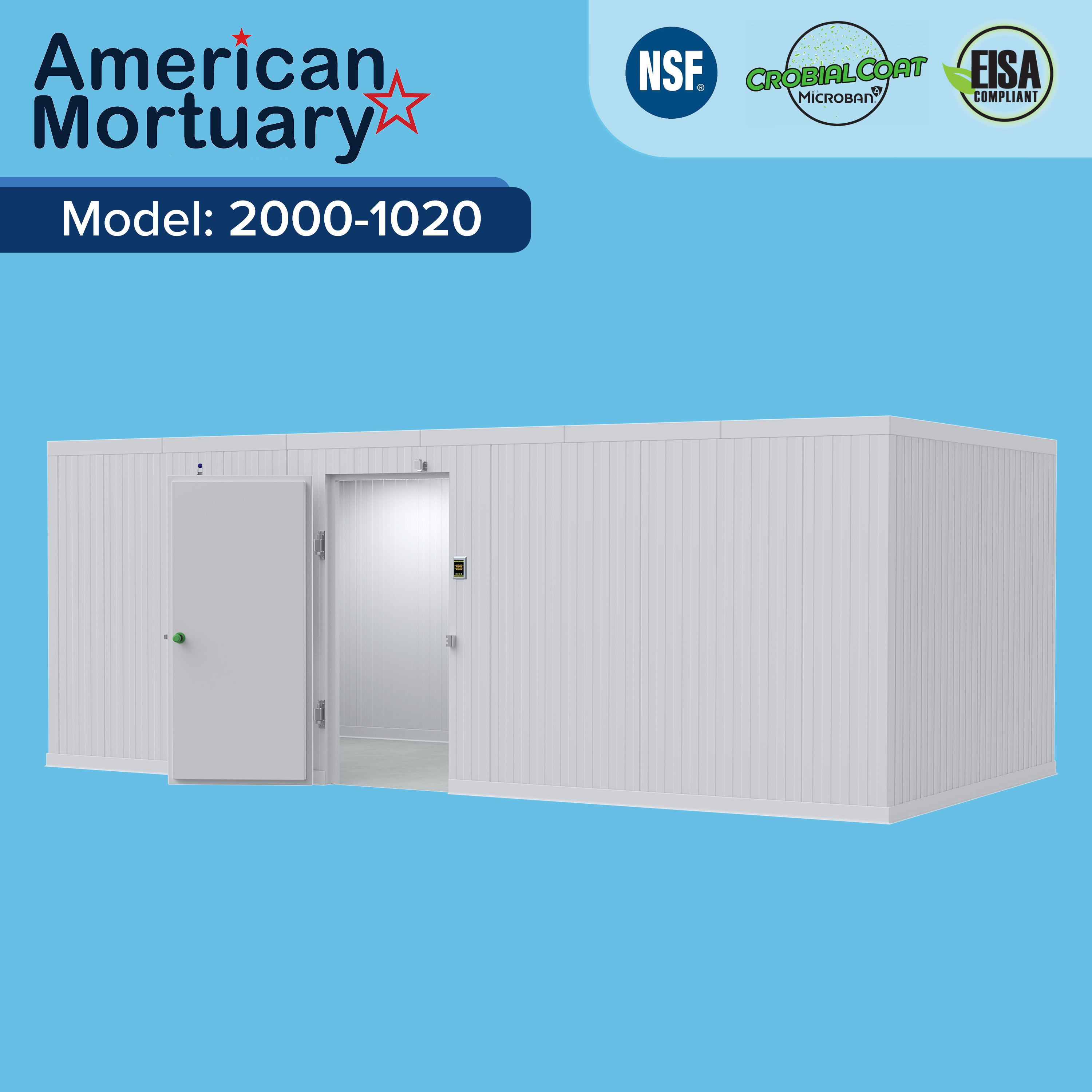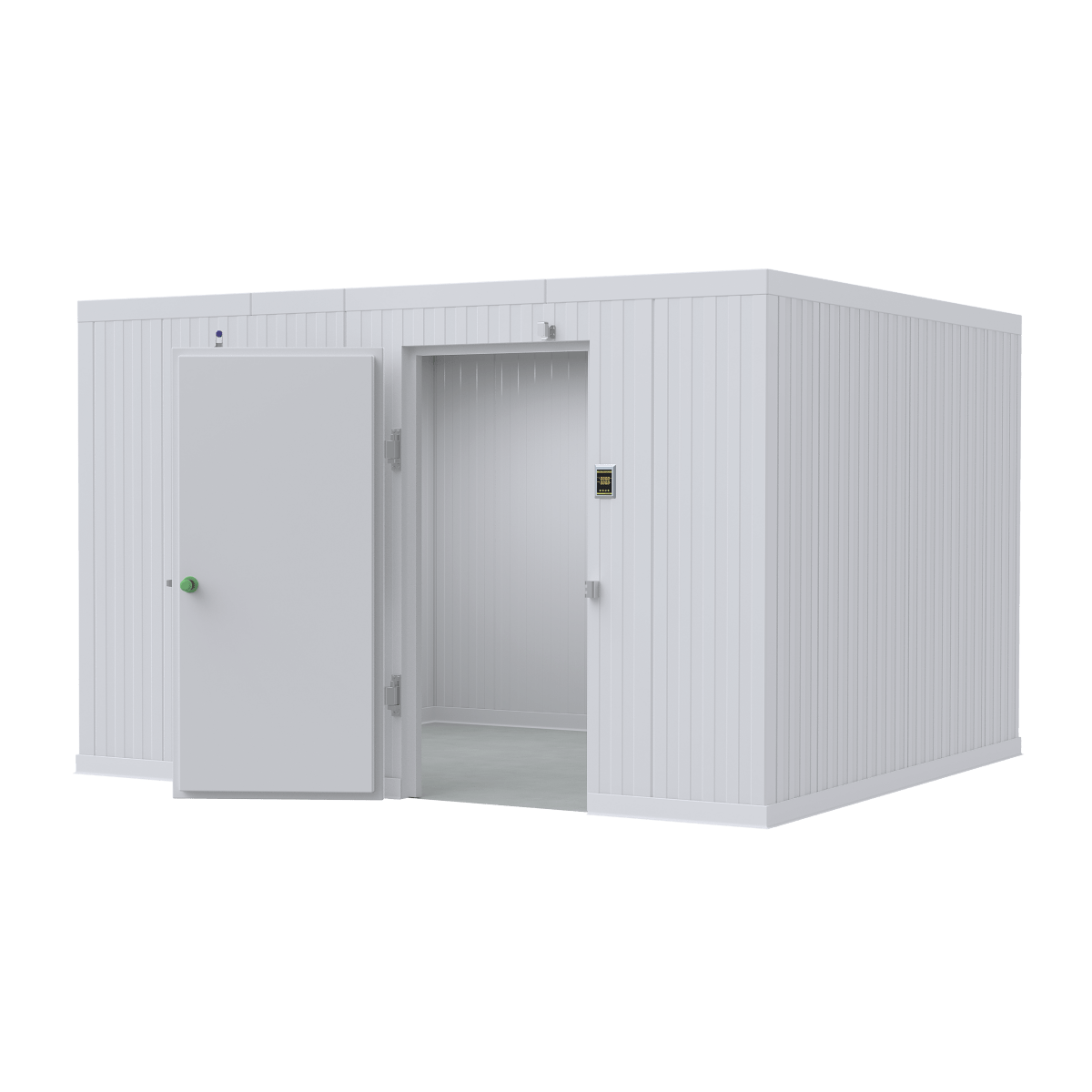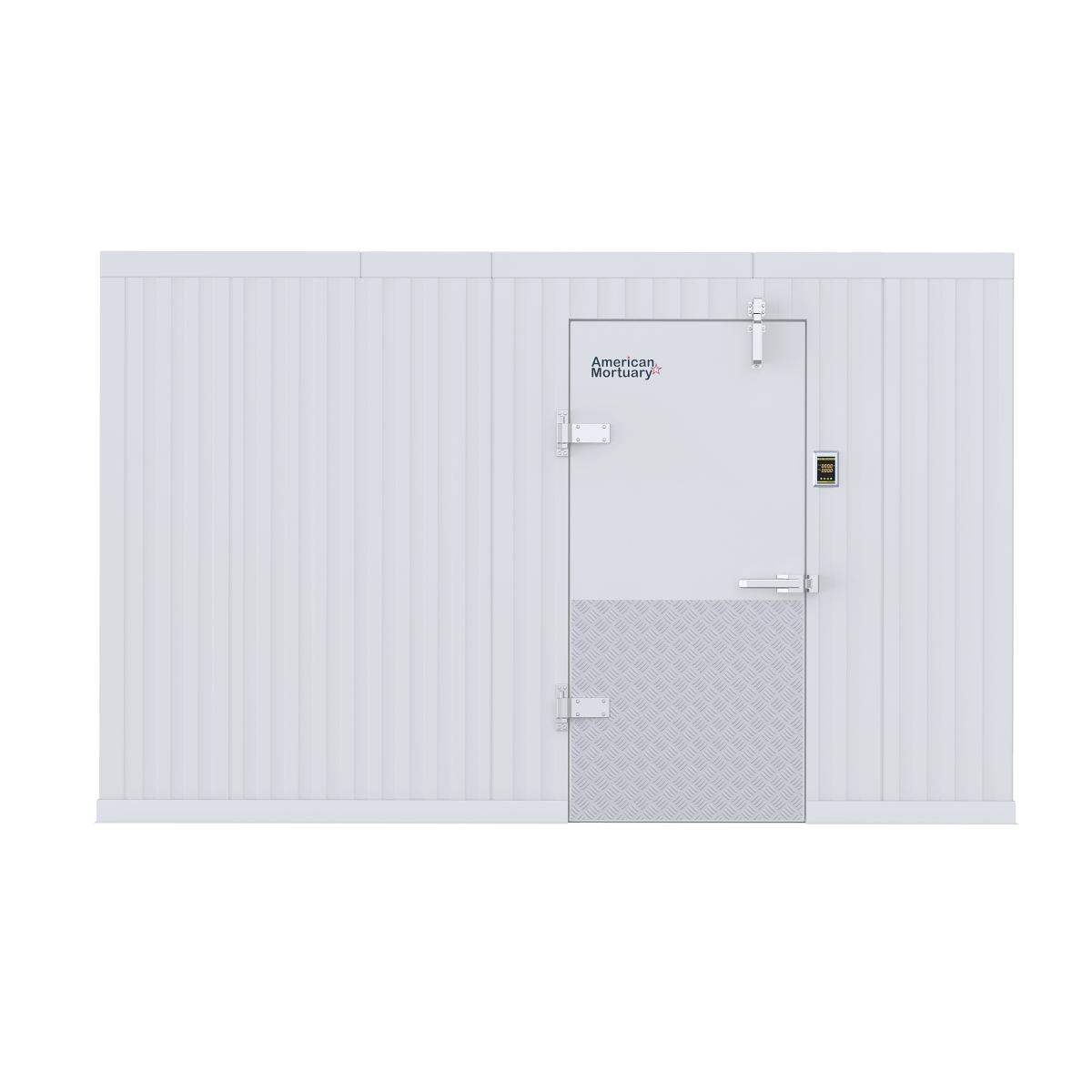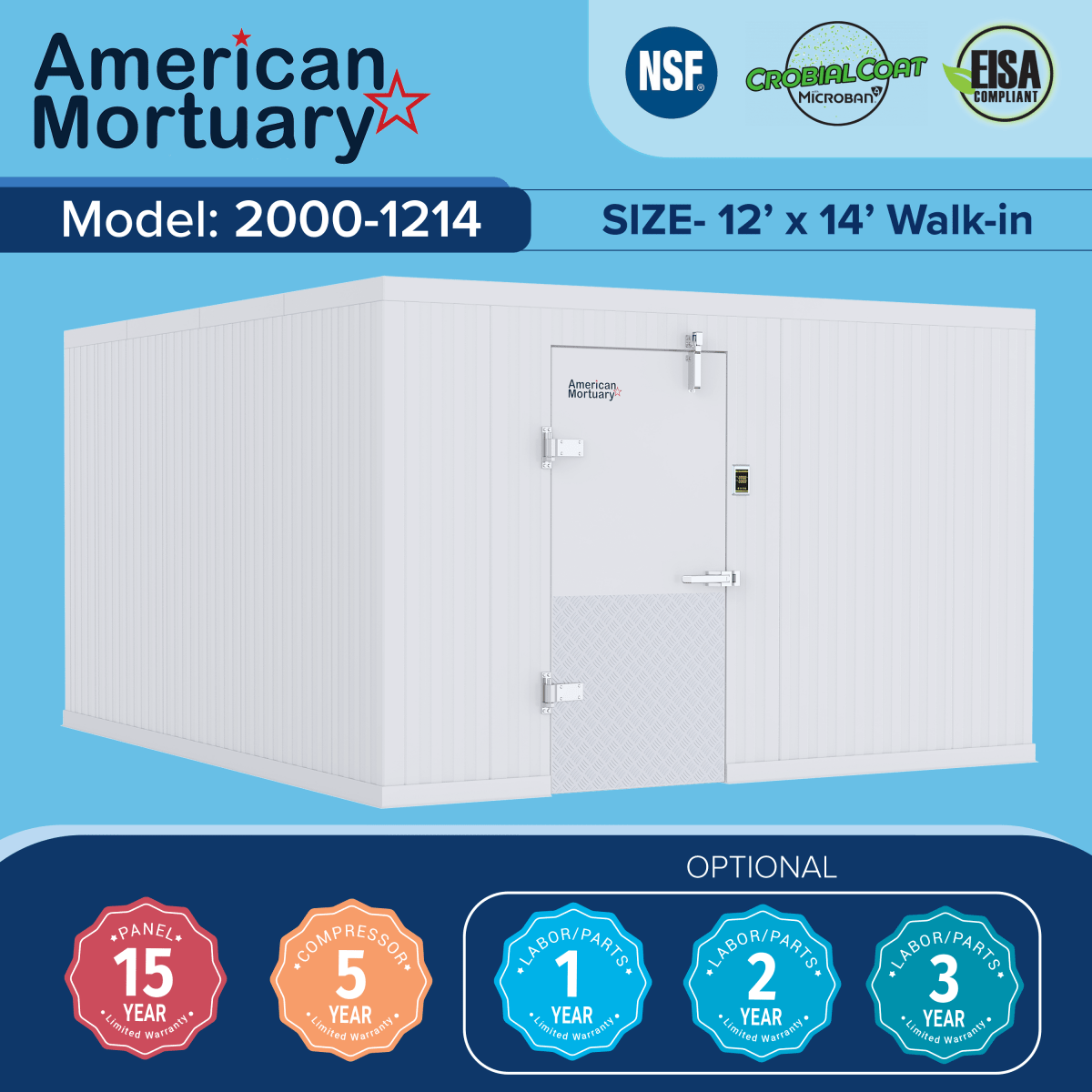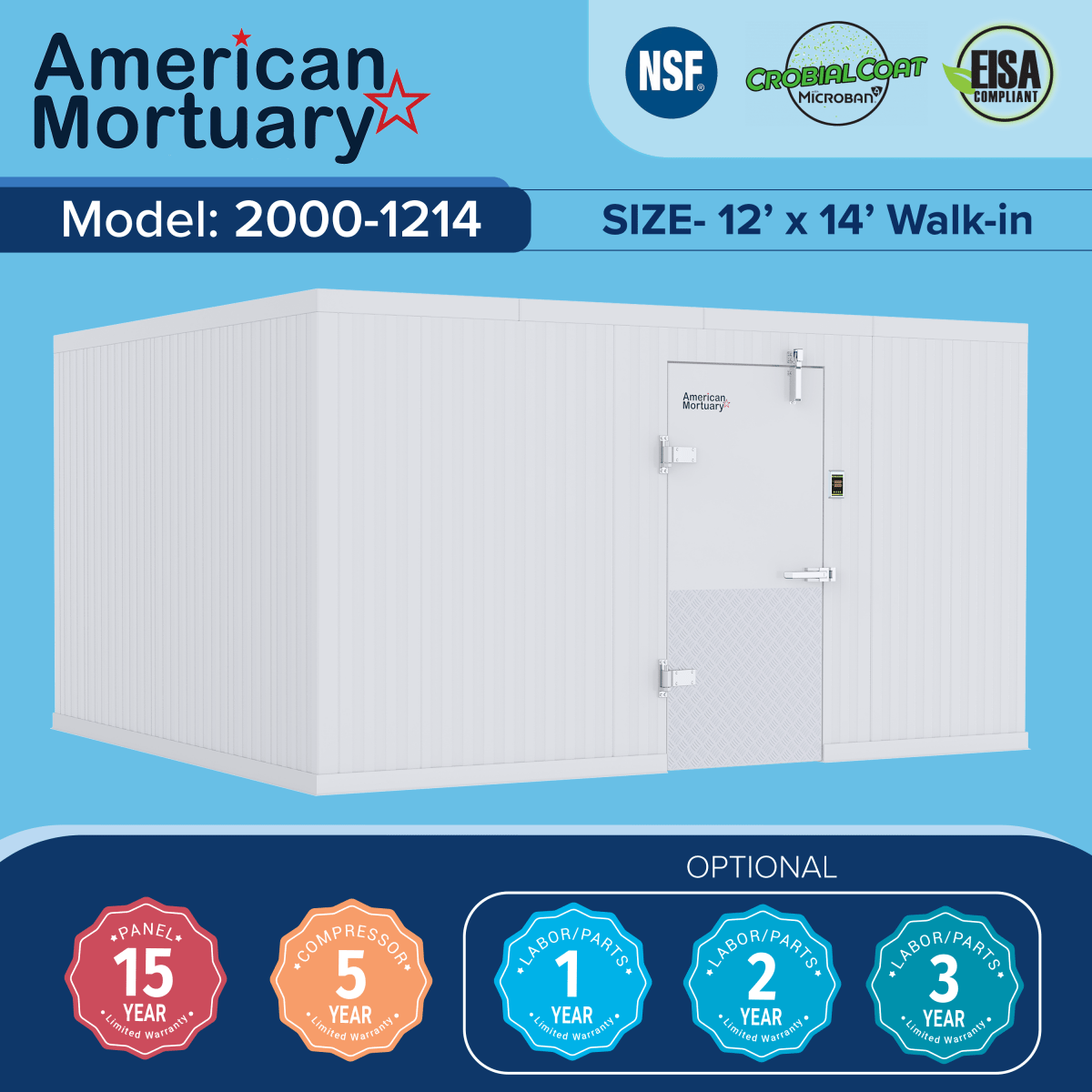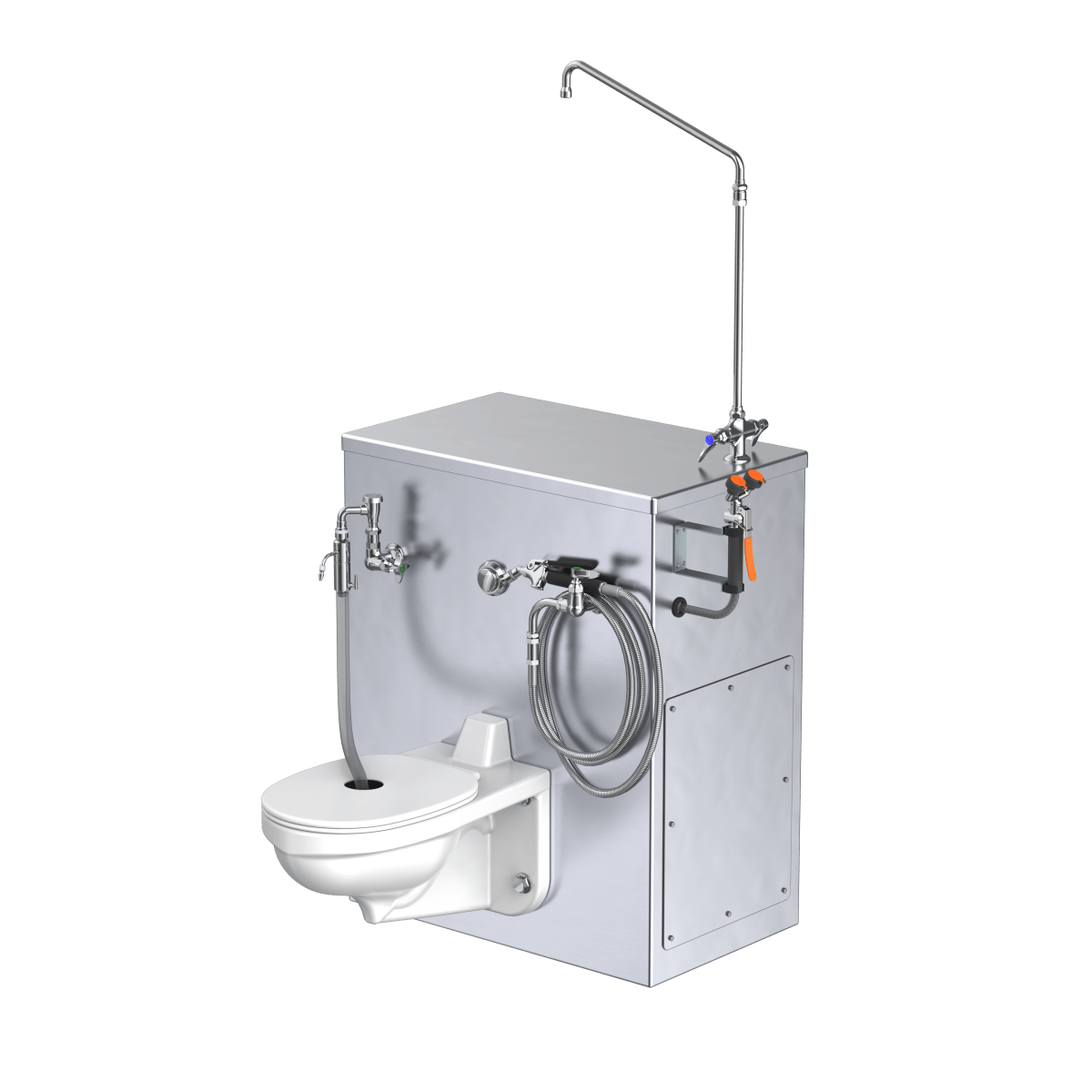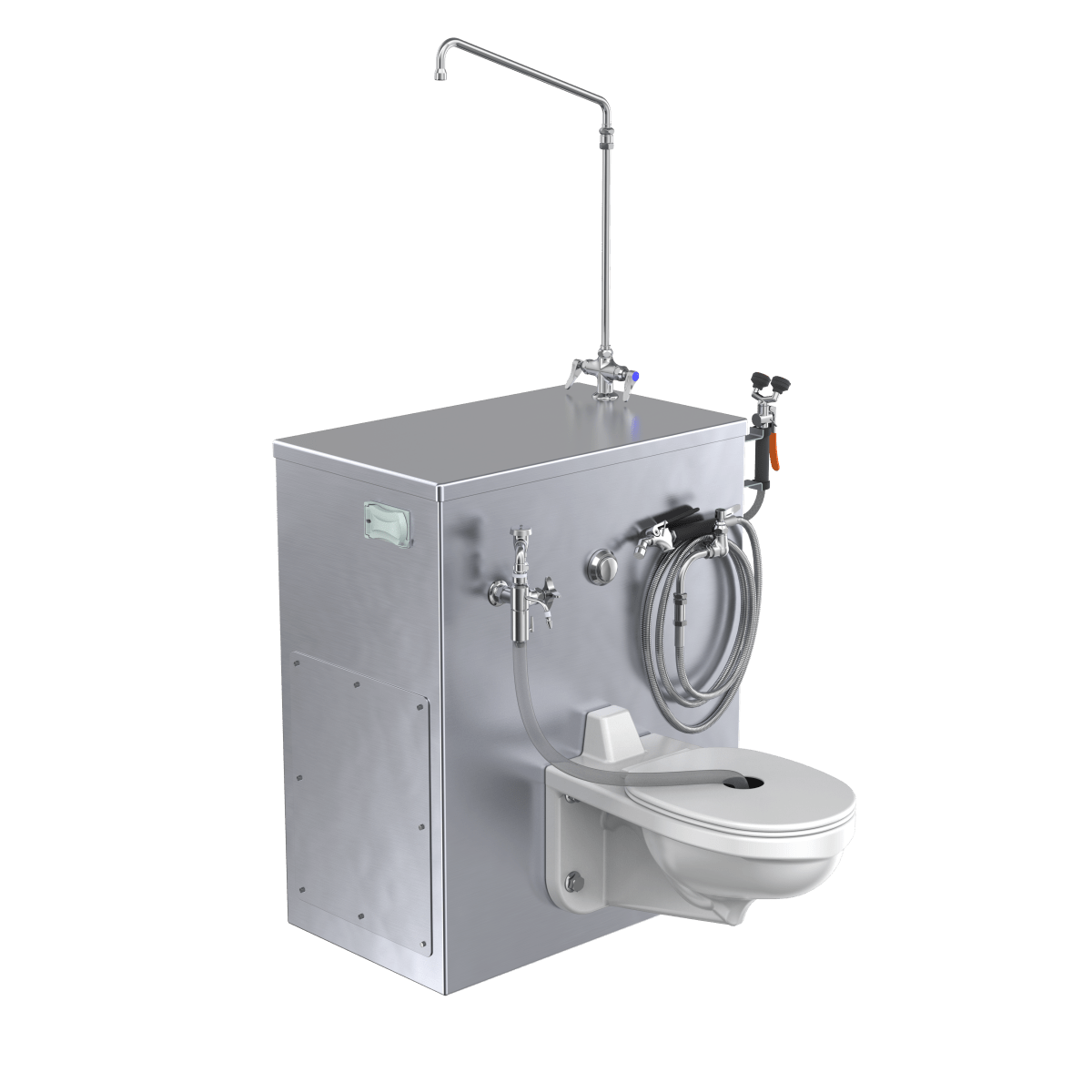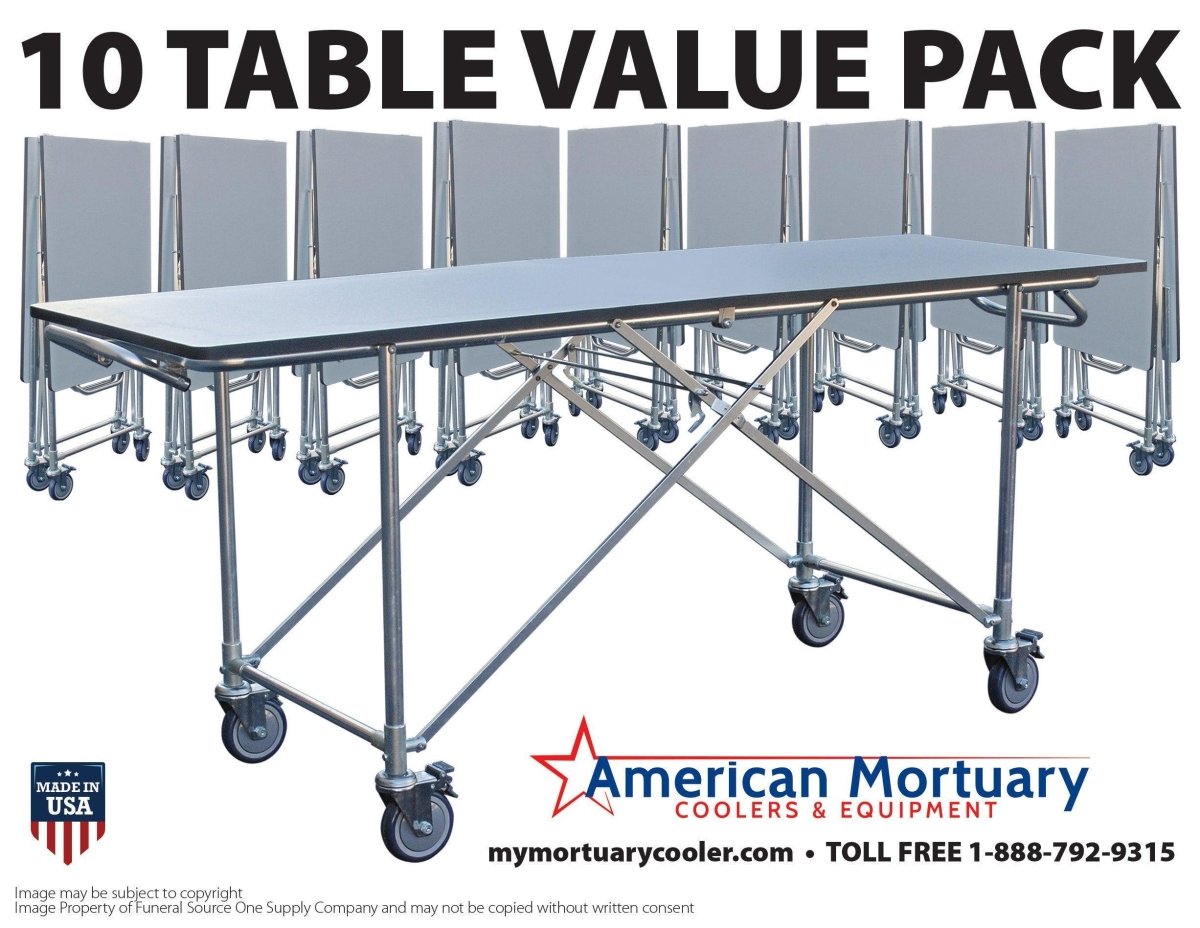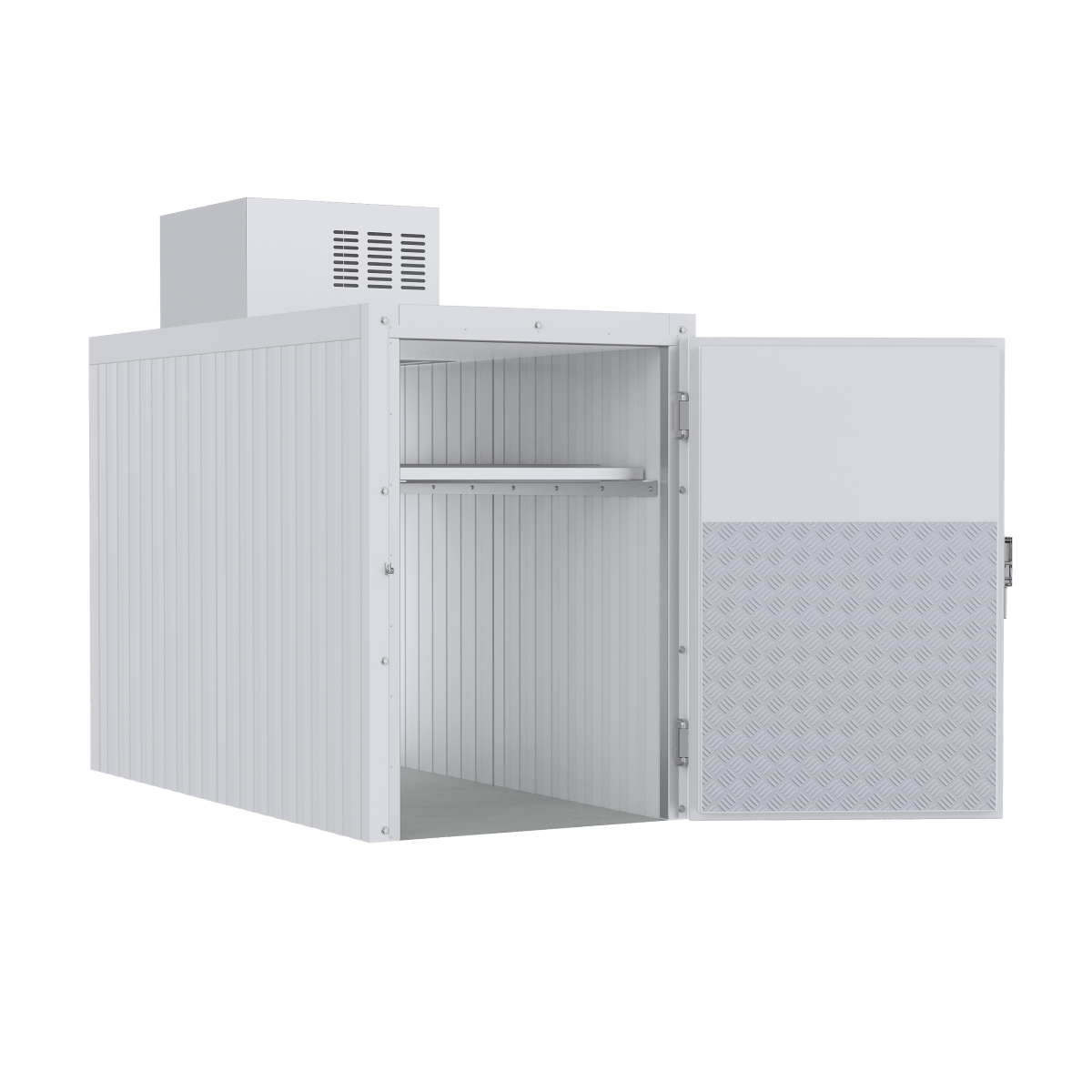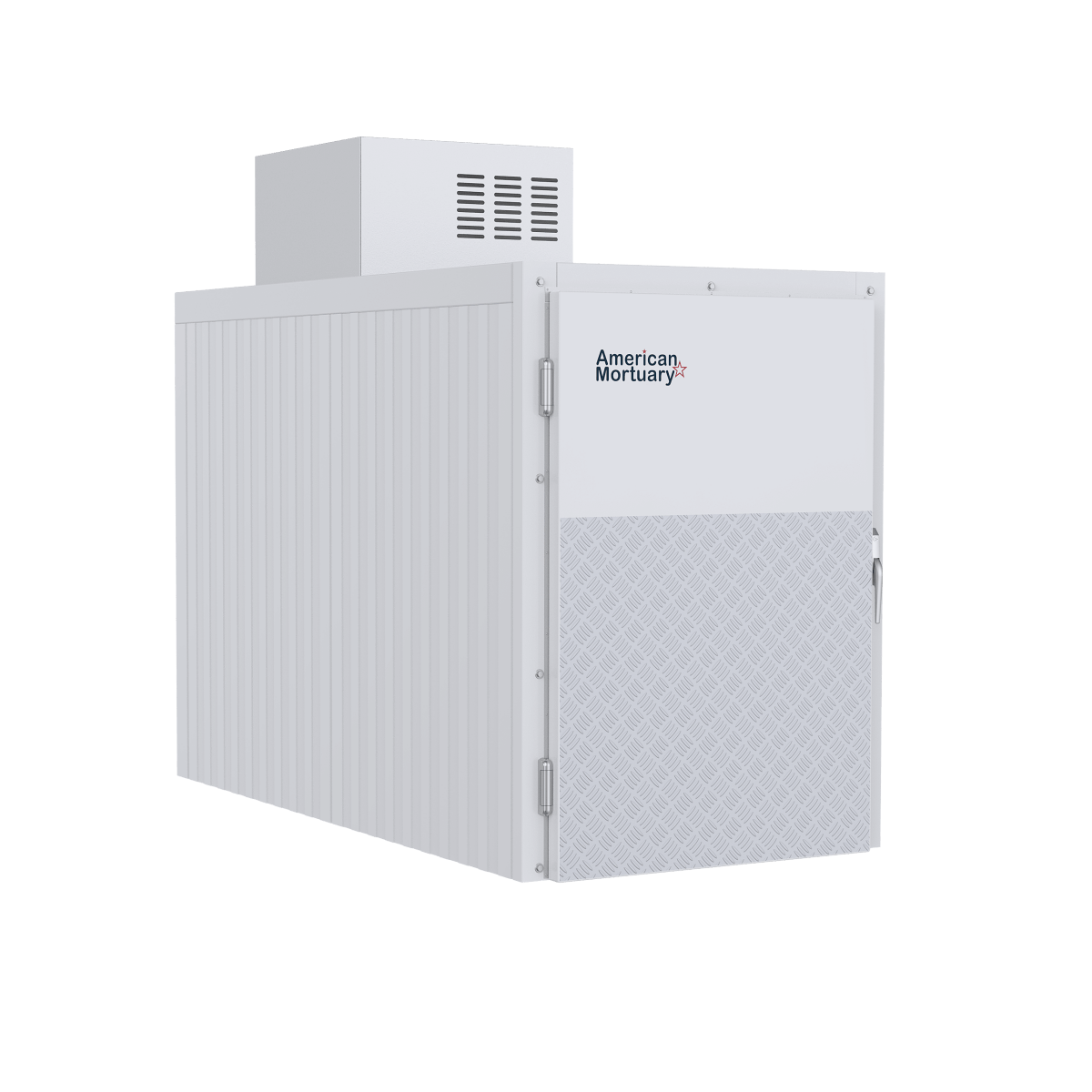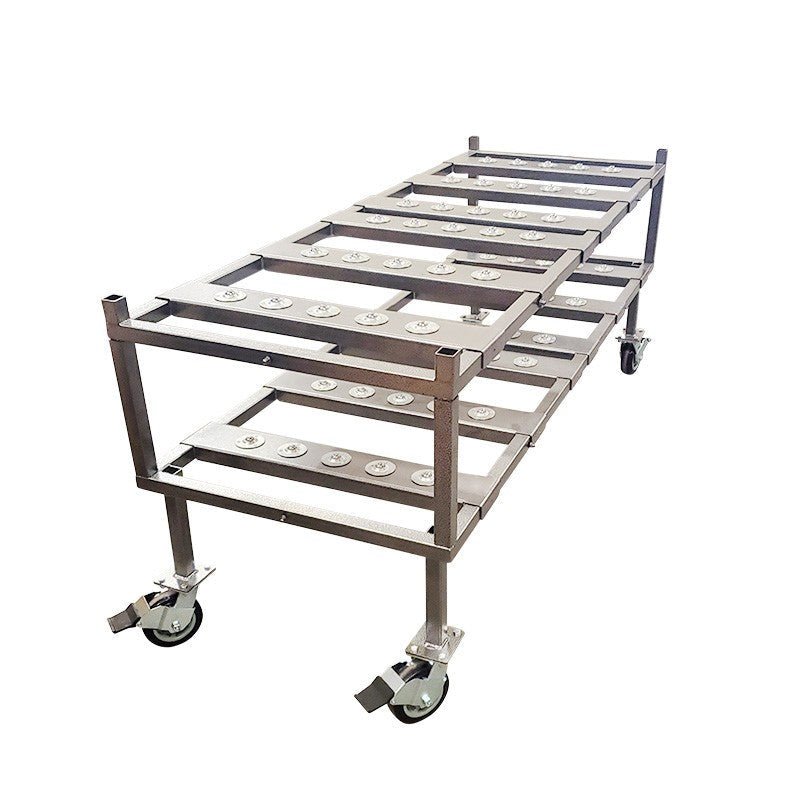Finding the Perfect Mortuary Storage Solution
A ref rack is a specialized equipment unit used to organize and store bodies within mortuary refrigeration systems. These storage solutions come in various designs to maximize space efficiency while ensuring proper cooling.
| What is a Ref Rack? | Primary Use | Types Available |
|---|---|---|
| Storage framework for mortuary coolers | Organizing deceased bodies in refrigerated environments | - Roller racks - Telescopic racks - Slide-out racks - Multi-tier systems |
Ref racks serve as the backbone of any mortuary refrigeration setup, providing structured storage that optimizes both space and accessibility. Whether you're upgrading an existing funeral home cooler or equipping a new facility, selecting the right rack system directly impacts your operational efficiency, staff safety, and storage capacity.
The decision shouldn't be taken lightly - the right ref rack can streamline body transfers, maximize available cooler space, and ensure proper temperature distribution throughout your storage area. Conversely, choosing incorrectly can lead to workflow bottlenecks, maintenance headaches, and potentially inadequate cooling.
Many funeral directors underestimate how much the rack configuration affects their daily operations. A well-designed system with appropriate rollers, proper weight capacity, and ergonomic features can dramatically reduce the physical strain on staff while improving overall workflow.
I'm with American Mortuary Coolers, a national-level supplier of mortuary refrigeration systems with extensive experience helping funeral homes optimize their ref rack configurations for maximum efficiency and durability. Our work with hundreds of funeral facilities has provided unique insights into the practical challenges directors face when selecting appropriate cold storage solutions.

Ref rack terms to learn:
What is a Ref Rack?
When you walk into a professional mortuary cooler, you'll immediately notice the organized storage systems that keep everything in perfect order. That's a ref rack - the backbone of any well-run mortuary refrigeration system.
Think of a ref rack as the specialized framework that keeps everything organized inside mortuary coolers and freezers. While "ref rack" might sound technical, it's simply the industry term for the structured storage systems that hold and organize deceased remains with dignity and efficiency.
Unlike ordinary shelving you'd find in a warehouse, these racks are purpose-built for the unique and sensitive requirements of mortuary care. They're designed to hold standard body trays while ensuring cooling air can circulate properly around each space.
"I often tell new funeral directors that the ref rack is like the unsung hero of our cooling systems," says one of our experienced technicians at American Mortuary Coolers. "You can have the most powerful cooling unit in the world, but without a properly designed rack system, you'll never maintain consistent temperatures throughout your storage space."
Primary Uses of a Ref Rack
At its heart, a ref rack creates organized, accessible cold storage for the deceased in your care. But these specialized systems do much more than just hold bodies.
Good ref racks transform how you identify and organize remains, making retrieval quick and reducing the risk of mix-ups. By elevating bodies off the floor and creating space between them, they promote proper air circulation for consistent cooling throughout your storage area.
The space optimization is remarkable - a well-designed multi-tier system can dramatically increase your facility's capacity without expanding your cooler's footprint. Modern ref racks often include roller or telescopic mechanisms that make transfers easier on your staff, reducing physical strain during daily operations.
Some systems even include integrated document holders, keeping identification and paperwork with the deceased at all times - a small feature that makes a big difference in busy facilities.
How a Ref Rack Boosts Efficiency
The difference between a basic cooler setup and one with a properly designed ref rack system is like night and day for daily operations.
Space optimization might be the most obvious benefit - a properly configured rack system typically increases storage capacity by 40-60% compared to floor storage. We've installed multi-tier systems that accommodate 40-50 bodies in spaces that previously held only 10-15.
Rapid loading and retrieval transforms how your team works. Telescopic racks with roller mechanisms allow a single staff member to safely move bodies without additional help. This not only cuts transfer times by up to half but significantly reduces workplace injury risks.
Your cooling system will thank you too. Better air circulation means energy efficiency improvements of 15-20% compared to poorly organized refrigeration spaces - savings that add up month after month on your utility bills.
A funeral director from Atlanta recently told us: "After upgrading to a new roller ref rack system, we cut our preparation time by nearly a third. What used to take two staff members 15 minutes now takes one person 5 minutes."

Comparing Popular Ref Rack Types
When it comes to choosing a ref rack for your mortuary facility, the options might seem overwhelming at first. Think of it like choosing the right vehicle - what works for a small country funeral home won't necessarily suit a busy urban medical examiner's office. Let's explore the different types available so you can find your perfect match.
Refrigeration & Mortuary Racks
Roller Systems are the workhorses of the mortuary world. Picture smooth-gliding horizontal rails with sturdy rollers supporting each body tray. These systems are incredibly practical for everyday use, supporting weights over 300 pounds while requiring minimal effort to move.
I recently spoke with a funeral director from Chicago who couldn't stop praising his new roller ref rack: "It's been a complete game-changer for us. Even our 65-year-old assistant can safely move a 250-pound deceased without breaking a sweat or calling for help."
Telescopic Slide Racks take things up a notch with sophisticated rails similar to what you'd find in high-end kitchen drawers. They offer more controlled movement than basic rollers, with smooth extension that prevents jerky movements during transfers. The oilite bronze bushings in quality models ensure they'll keep operating smoothly for years, even with daily use.
For larger facilities, Walk-In Cooler Racks maximize every cubic inch of your refrigeration space. These modular systems can be customized to fit nearly any cooler configuration, whether you need end-loading, side-loading, or a combination approach. Many of our clients appreciate how these systems can be designed with specialized wider bays for bariatric cases – an increasingly important consideration in modern facilities.
If you're working with a tighter budget or have a lower-volume facility, Body Tray Racks provide basic stationary support without the sliding functionality. While they require manual lifting for placement and removal, they maximize storage density and serve perfectly well in many smaller operations or temporary storage situations.
Reference & Document Racks (Morgue Use)
While bodies are obviously the primary focus in a mortuary setting, proper documentation is the unsung hero of smooth operations. Nothing creates chaos faster than misplaced or damaged paperwork.
Wall-Mount Plastic Reference Racks keep important documents visible and protected near refrigeration units. With clear PET pockets that typically hold up to 20 pages in 10 pockets, these racks ensure death certificates, release forms, and identification papers stay organized and accessible. The NSF-approved materials stand up to the unique environmental conditions in mortuary settings.
For your administrative areas, Desktop Reference Racks provide organized access to forms and certificates with adjustable viewing angles and weighted bases for stability. These modest investments can dramatically improve workflow efficiency by keeping frequently-used documents at your fingertips.
Many modern facilities are moving toward Integrated Documentation Systems that attach directly to individual storage positions on the ref rack itself. These weatherproof document sleeves travel with the deceased, minimizing identification errors and maintaining chain-of-custody. Some advanced systems even incorporate barcode or RFID compatibility for digital tracking – particularly valuable for medical examiner offices or larger operations.
The right documentation system paired with the appropriate body storage ref rack creates a seamless workflow that reduces errors, saves time, and ultimately allows you to provide better service to families during difficult times.
More info about mortuary racks
Essential Features & Specifications Checklist
When evaluating ref rack options for your mortuary facility, certain specifications and features are non-negotiable for ensuring safety, efficiency, and compliance. Use this comprehensive checklist to guide your decision-making process.

Must-Have Specs for a Ref Rack
Choosing the right ref rack starts with understanding the essential specifications that will serve your facility's needs. Every mortuary operation has unique requirements, but certain features simply can't be compromised.
When it comes to load capacity, your ref rack should support a minimum of 300 pounds per tray. This might seem excessive until you consider that many cases exceed 200 pounds, and you'll need that extra margin for safety. The overall structure should have appropriate capacity for full occupancy with a safety factor of at least 2:1 for all stated weight limits.
"The most common mistake we see is selecting racks based solely on capacity without considering airflow," notes one of our mortuary equipment specialists from Tennessee. "A ref rack that blocks proper circulation can create temperature dead zones, compromising the entire cooling system."
Material selection dramatically impacts your rack's performance and longevity. Most quality ref racks are constructed from either aluminum or stainless steel, typically in 14-16 gauge thickness to ensure structural integrity. Both materials offer non-porous surfaces that facilitate proper sanitation, but they do have distinct advantages.
| Material | Pros | Cons | Best For |
|---|---|---|---|
| Aluminum | - Lightweight - Naturally corrosion-resistant - Less expensive |
- Lower load capacity - Less impact resistance |
- Smaller facilities - Budget-conscious buyers |
| Stainless Steel | - Higher load capacity - Superior durability - Better impact resistance |
- Heavier - More expensive - May require anti-corrosion maintenance |
- High-volume facilities - Bariatric applications |
| Powder-Coated Steel | - Cost-effective - Good corrosion resistance when coating intact - Available in various colors |
- Coating can chip - Requires more maintenance - Shorter lifespan |
- Temporary installations - Non-critical applications |
Dimensional considerations matter more than many buyers initially realize. Your ref rack should accommodate standard trays (typically 78" L × 23" W × 2.75" H) with appropriate clearance between tiers—at least 12 inches to allow for proper handling. Don't forget to measure your facility's doorways and corridors before ordering; we've seen too many customers face the heartbreak of a perfect rack that simply won't fit through their doors.
Regulatory compliance isn't optional in our industry. Look for NSF approval, which ensures your ref rack meets food-grade equipment standards—a requirement that extends to mortuary equipment in most jurisdictions. OSHA compliance protects your staff, while local health department requirements vary by location but are equally important.
Your ref rack must work harmoniously with your cooling system. The design should promote proper air circulation without interfering with cooling unit operation. Compatibility with temperature monitoring systems is increasingly important as digital oversight becomes standard practice.
Smart Accessories That Matter
The right accessories can transform a good ref rack into an exceptional workflow tool. While the basic structure is important, these additional features often determine how effectively your team can work day to day.
Caster systems might seem like a minor detail until you've tried moving a loaded rack without them. Quality ref racks feature 5-inch or larger swivel casters with reliable locking mechanisms for stability during loading and unloading. Look for inset mounting to reduce overall footprint and non-marking materials that won't damage your facility floors.
"The addition of quality casters to our ref rack system has saved countless staff hours," reports a Dallas funeral home director we work with. "What used to require two people to safely move bodies now can be done by one person with minimal physical strain."
Bumper guards protect both your investment and your facility. Corner and edge protection prevents damage during movement, while non-marking materials ensure walls stay pristine. The best bumper systems feature easily replaceable designs and impact-absorbing properties that minimize noise—a considerate touch in our sensitive work environment.
Tray guides and stops are crucial safety features that prevent accidents. Adjustable guides accommodate various tray sizes, while positive stops prevent accidental tray removal. Visual alignment markers help ensure proper positioning, and quick-release mechanisms provide emergency access when needed. These seemingly small details can make an enormous difference during hurried or stressful situations.
Modern identification systems have evolved beyond simple card holders. Today's ref racks can incorporate barcode or RFID compatibility, weatherproof documentation sleeves, and even digital integration options. These features reduce the risk of misidentification while streamlining your record-keeping process.
At American Mortuary Coolers, we've found that thoughtful accessory selection often distinguishes the most successful installations from those that merely "get the job done." Your staff deserves equipment that makes their challenging work easier, not harder.
More info about mortuary rack accessories
Materials & Durability Insights
When it comes to ref racks, the materials used in construction aren't just about appearance – they directly impact how well your system performs and how long it will serve your facility. Making the right choice here can mean the difference between replacing equipment in a few years or enjoying decades of reliable service.
How Materials Impact Performance
Aluminum is often the go-to choice for many mortuary facilities, and for good reason. These lightweight ref racks come with a lifetime guarantee against rust and corrosion (like the popular New Age 1335 model), which provides incredible peace of mind in the humid environment of a mortuary cooler.
"Most of our clients are pleasantly surprised by how much easier aluminum racks are to install and reposition," says one of our equipment specialists at American Mortuary Coolers. "Being 30-40% lighter than stainless steel models makes a real difference when you're setting up or reconfiguring your space."
The natural corrosion resistance of aluminum means it doesn't need additional treatments or coatings to withstand daily use in a refrigerated environment. However, aluminum does have its limitations – it generally supports lower weight capacities (though still typically 300+ pounds per position), and it may show dents or damage more readily than other materials.
Stainless steel represents the premium option for facilities that need maximum durability and strength. These ref racks offer superior weight capacity, often supporting 400+ pounds per position, which makes them ideal for facilities that regularly handle bariatric cases.
The robust construction of stainless steel stands up beautifully to physical impacts and high-usage environments. As one funeral director told us, "After five years of daily use, our stainless steel racks still look almost new – definitely worth the investment for our busy facility."
The primary drawbacks of stainless steel are its significantly higher cost (typically 40-60% more than aluminum) and its greater weight, which may be a consideration for facilities with floor loading restrictions. There's also potential for corrosion if improper grades are used or if the surface becomes contaminated with carbon steel particles.
The material you choose affects how often you'll need to perform maintenance and what that maintenance involves:
Aluminum racks need little more than regular cleaning with mild detergents. Their natural oxide layer provides ongoing protection against corrosion, making them virtually maintenance-free. They may, however, show cosmetic wear more quickly in high-traffic environments.
Stainless steel racks require proper cleaning protocols to maintain their corrosion resistance. Using harsh chemicals or abrasive tools like steel wool can damage the passive layer that protects the steel. When properly maintained, though, these racks can last 20+ years even in busy facilities.
Coated steel racks (a more budget-friendly option) demand vigilant inspection for coating damage. Once the protective coating is compromised, the underlying steel quickly corrodes in the humid environment of a mortuary cooler, potentially leading to structural issues.
The thermal properties of your ref rack material also matter in a refrigerated environment. Aluminum conducts heat approximately 3-4 times more efficiently than stainless steel, which can impact how quickly bodies cool and how temperature distributes throughout your storage area. This higher conductivity can be either beneficial or detrimental depending on your specific cooling system design and airflow patterns.
"In systems where the rack itself serves as part of the cooling surface, aluminum's higher conductivity may actually improve overall system efficiency," explains our cooling systems engineer. "But this needs to be considered alongside your specific refrigeration setup."

When making your decision, consider not just the initial purchase price but the total lifecycle cost. A properly maintained stainless steel ref rack might cost more upfront but could provide decades of service with minimal maintenance costs. Meanwhile, an aluminum system offers excellent value for standard applications while still providing years of reliable performance.
At American Mortuary Coolers, we've seen how the right material choice leads to long-term satisfaction. As one of our Tennessee customers put it: "The aluminum racks we installed five years ago still look and function like new – best investment we made during our renovation."
Sizing, Configuration, and Cost Factors
Finding the right ref rack for your facility is like buying the perfect pair of shoes – size matters, and so does the fit. Let's walk through how to determine what dimensions and configuration will work best for your specific needs without breaking the bank.
Selecting the Right Size Ref Rack
Before you commit to a ref rack system, take some time to really get to know your space. I've visited countless funeral homes where directors wished they'd measured twice before ordering once.
Start by grabbing a tape measure and documenting your cooler's exact dimensions. Don't forget to account for those swinging doors and any cooling equipment that might eat into your usable space. The standard mortuary cooler door is 36"×80", but I've seen plenty of older facilities with doorways that would make a hobbit feel cramped.
Ceiling height is another crucial factor, especially if you're considering a multi-tier system. I remember visiting a funeral home in Nashville where they had to return a beautiful new rack because they forgot to measure the height of their overhead lighting fixtures!
"When we designed our new facility in Columbia, SC," a funeral director once told me, "we intentionally selected a modular ref rack system that could expand from three to five tiers as our business grew. That foresight saved us from having to replace the entire system just three years later."
Think about your average case volume and how it fluctuates throughout the year. If you serve a community with higher obesity rates, you'll want to allocate space for wider positions – typically 36" instead of the standard 23". And always plan for growth – the last thing you want is to outgrow your system in just a few years.
Today's ref rack systems come in various configurations to fit different workflows. End-loading racks generally offer better space efficiency but need more clearance for access. Side-loading systems give you easier access but might reduce your overall capacity. Some larger facilities even benefit from pass-through configurations, allowing loading from one room and retrieval from another – a real time-saver during busy periods.
Typical Price Ranges & Leading Brands
Let's talk money – because budget considerations are real, and ref rack prices vary widely based on what you're looking for.
Several factors drive the cost of your system. Material choice is a big one – stainless steel typically runs 40-60% higher than comparable aluminum models. Larger, multi-tier systems cost more upfront but often provide better value per position. And just like cars, the quality of the mechanical components matters – premium roller systems provide smoother operation and longer life, but at a higher price point.
To give you a realistic idea of what to expect, here's what I've seen in the market:
Basic aluminum single-tier systems start around $1,500-$3,000 for 2-3 positions – perfect for smaller facilities. Mid-range multi-tier aluminum systems typically run $5,000-$15,000 for 10-20 positions, while premium stainless steel multi-tier systems can range from $12,000-$30,000 for 15-30 positions. For larger operations needing custom walk-in cooler rack systems, you're looking at $20,000-$50,000+ for 30-50 positions.
Several manufacturers have established strong reputations in this specialized field. American Mortuary Coolers (that's us!) specializes in custom solutions with nationwide delivery. We pride ourselves on creating durable, custom rack systems specifically designed for mortuary applications. New Age Industrial offers the 1335 Aluminum Roll-In End-Loading Refrigerator Proofer Rack with a lifetime guarantee against rust and corrosion. Mortech Manufacturing produces the Series 7010 Portable Mortuary Storage Rack System, while MobiMedical is known for innovative designs including multi-directional loading roller racks with integrated brake systems.
"We've found that investing in a quality ref rack system from a reputable manufacturer pays dividends in reduced maintenance and longer service life," our service manager often tells clients. "The difference between budget and premium systems becomes apparent within the first few years of operation."
When comparing options, don't just look at the initial cost – consider warranty length, expected lifespan, and ongoing maintenance requirements. A well-built system might cost more upfront but save you thousands in the long run.
Latest research on rack pricing
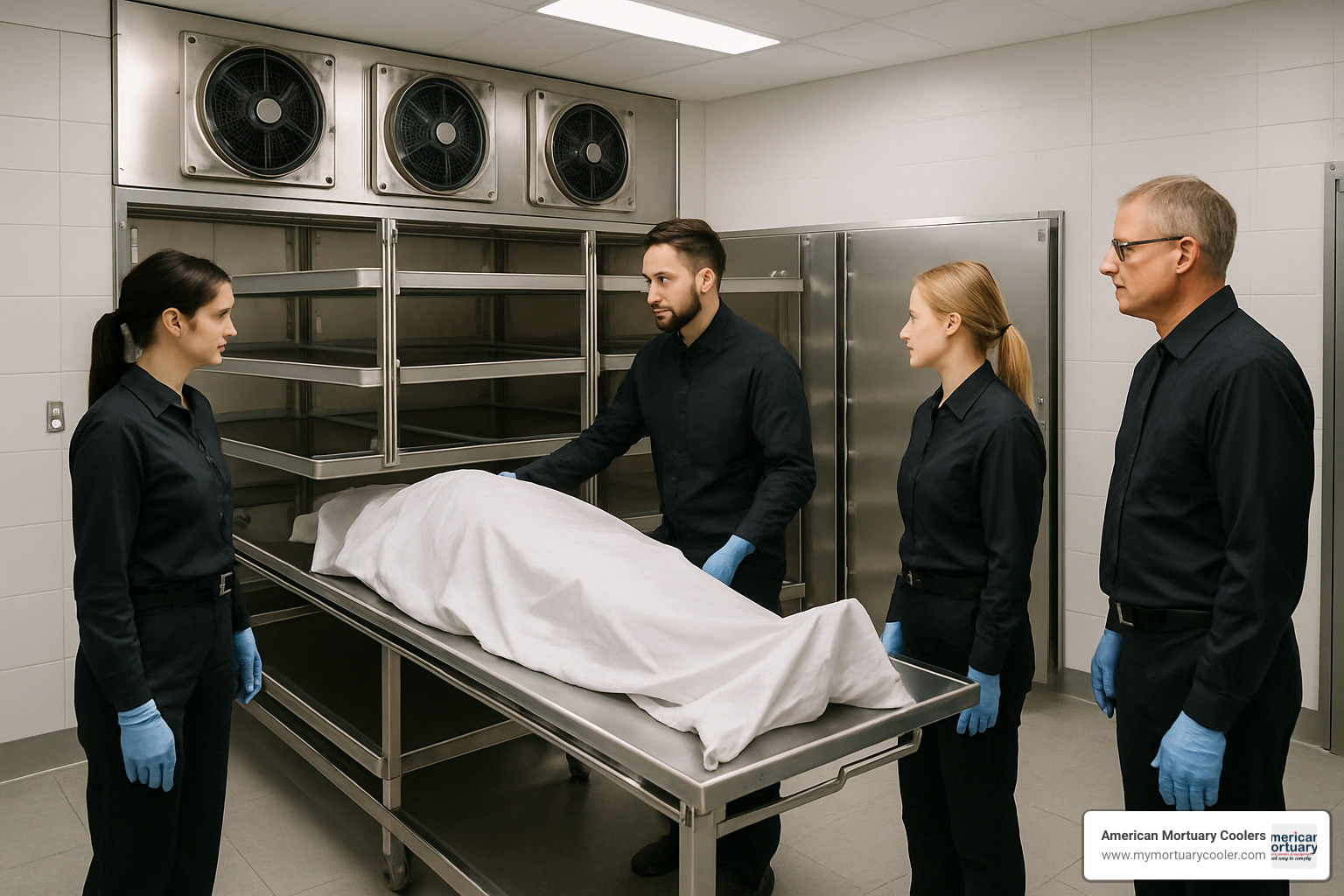
Maintenance, Safety & Compliance
Taking care of your ref rack system isn't just about protecting your investment—it's about ensuring safety for your staff and maintaining the dignity of those in your care. At American Mortuary Coolers, we've seen how proper maintenance can extend equipment life by 5-10 years while keeping your facility compliant with regulations.
Preventive Care Schedule for Ref Racks
A well-structured maintenance routine doesn't have to be complicated to be effective. One funeral director in Nashville told me, "Once we implemented a simple maintenance calendar, our repair costs dropped by almost 70% in the first year alone."
For daily care, your staff should perform quick visual checks of the ref rack components, immediately clean any biological materials, and verify all moving parts work smoothly. Pay special attention to caster locks—they're often the first thing to malfunction but among the most important safety features.
Weekly maintenance should include a more thorough sanitizing of all surfaces using appropriate disinfectants. Don't forget to inspect roller mechanisms—a bit of debris can quickly affect their smooth operation. As one of our technicians often says, "An ounce of prevention saves a pound of repair bills."
On a monthly basis, take time to check and tighten any loose hardware. I've visited facilities where loose bolts led to complete rack failure during body transfers—an easily preventable situation that caused both equipment damage and potential staff injuries. This is also a good time to lubricate moving parts according to the manufacturer's guidelines.
Quarterly, give special attention to those hardworking caster assemblies. They bear the brunt of the weight and movement, so check for flat spots, bearing wear, and proper swivel action. Also verify your ref rack remains level and structurally sound.
Annual professional inspection should be non-negotiable. Have a qualified technician thoroughly evaluate the entire system, replace worn components, and perform load testing. This is also the perfect time to update your maintenance records—documentation that proves invaluable during regulatory inspections.
"I keep a simple maintenance log right next to our ref rack," shares a funeral director from Memphis. "When the health department made a surprise visit last year, that binder of maintenance records turned what could have been a stressful day into a quick, positive inspection."
Key Safety Considerations
Safety around mortuary equipment requires attention to both mechanical concerns and biological hazards. The heaviest ref rack loads often come at the most stressful times, making careful attention to safety protocols essential.
When it comes to load management, never test the limits of your equipment. The weight capacity listed by manufacturers includes a safety margin, but exceeding the specified limits removes that protection. Train your staff to distribute weight evenly and to position bodies properly to maintain balance during transfers.
One particularly important but often overlooked aspect is transfer procedures. Establish clear protocols that specify minimum staffing requirements for different types of transfers. Even the best-designed ref rack can't prevent injuries if proper lifting techniques aren't followed.
Contamination control becomes especially important with storage equipment. Bloodborne pathogens require specific handling protocols under OSHA standard 29 CFR 1910.1030. Keep appropriate cleaning supplies readily available, and ensure staff are thoroughly trained on decontamination procedures.
The mechanical aspects of ref rack safety include being mindful of pinch points, ensuring safety stops work properly, and regularly testing locking mechanisms. During a recent installation in Atlanta, we noticed staff members propping rack doors open with various objects—a practice that both damages equipment and creates safety hazards.
Regulatory compliance touches every aspect of mortuary operations, and your ref rack system is no exception. Beyond OSHA requirements, you'll need to consider:
- NSF certification that confirms materials meet sanitation standards
- Local health department regulations which often specify storage requirements
- ADA considerations for staff operations
- Electrical certification for systems with integrated cooling
"Documentation is your best friend during inspections," our compliance specialist often reminds clients. "When that health inspector walks through your door, having organized records of your ref rack specifications, maintenance history, and staff training makes all the difference between a stressful day and a smooth visit."
A funeral director from Knoxville shared: "After 30 years in this business, I've learned that consistency is key. We check our ref racks every morning as part of opening procedures, and that simple habit has prevented countless problems."
More info about mortuary rack maintenance
Trends, Innovations & Case Studies
The mortuary refrigeration industry doesn't stand still - it's constantly evolving with exciting new technologies that make ref rack systems more efficient and user-friendly than ever before.
Emerging Trends in Ref Rack Design
The humble ref rack is getting some impressive upgrades these days. Energy efficiency has become a major focus, with designs that work smarter, not harder. Modern racks now feature sleek, aerodynamic structures that let cooling air flow freely around stored remains. Many newer models integrate with intelligent cooling systems that adjust their output based on how many bodies are actually in storage - no more wasting energy cooling empty space!
"We're seeing some fascinating innovations in materials too," shares one of our design specialists at American Mortuary Coolers. "Thermal break materials that prevent cold transfer between zones are making a huge difference in efficiency, and some facilities are reporting up to 20% energy savings with these new designs."
The Internet of Things (IoT) revolution has finally reached the mortuary industry, and it's changing everything. Imagine ref racks with tiny embedded sensors monitoring the temperature of each individual position, sending real-time data to your computer or phone. RFID tracking systems are improving chain of custody documentation, practically eliminating the risk of misidentification. One funeral director told me, "I can check the temperature of every position in my cooler from my phone while I'm at home. That peace of mind is priceless."

Safety innovations are making daily operations safer for everyone. The new multi-directional roller brakes automatically engage when pressure is applied, preventing unexpected movement during transfers. Hydraulic damping systems are eliminating the jerky motions that can make body handling so challenging. Even the materials themselves are getting safer, with anti-microbial surfaces that reduce the risk of pathogen transmission between cases.
Environmental consciousness has arrived in the mortuary industry too. Today's ref rack manufacturers are increasingly using recyclable construction materials and reducing harmful chemical treatments. Energy-efficient manufacturing processes and longer-lasting products mean less waste and a smaller environmental footprint overall.
"What impresses me most," notes our technology specialist at American Mortuary Coolers, "is how these innovations work together. The integration of IoT sensors with ref rack systems has transformed facility monitoring completely. Staff no longer need to physically check temperatures - the system sends alerts directly to their smartphones if anything falls outside acceptable parameters."
Real-World Ref Rack Success Story
Let me share a story that really demonstrates the difference a modern ref rack system can make. A large funeral home in the Chicago area was struggling with an outdated cooler system that was becoming a real bottleneck in their operation.
Their challenges were numerous: they had old-school single-tier floor storage that limited them to just 8 bodies. Staff members were manually lifting and moving deceased individuals, putting themselves at risk of injury. Poor air circulation meant inconsistent cooling throughout the space. And with case volume steadily increasing, they were running out of options.
Working with their team, we designed a custom ref rack solution that transformed their operation. The new system featured a four-tier telescopic rack with smooth roller assemblies, built from durable stainless steel to withstand years of heavy use. We added integrated tray stops and guide systems for safety, and made sure the design was compatible with battery-powered lifts for accessing the upper tiers.
The results were remarkable. Without expanding their cooler's footprint, they increased capacity from 8 to 24 positions - a 200% improvement! Transfer times dropped by 30% thanks to the improved ergonomics, and staff no longer needed to manually lift bodies at all. Better air circulation improved cooling efficiency by 25%, and they've reported zero transfer-related injuries since installation.
"The new ref rack system has completely transformed our operation," the funeral director told us afterward. "What used to be a bottleneck in our process is now one of our most efficient systems. The investment paid for itself within the first 18 months through increased capacity and reduced utility costs."
This case perfectly illustrates how a thoughtfully designed ref rack system can solve multiple problems at once. It's not just about storing more bodies - it's about creating a safer, more efficient workplace where staff can focus on providing dignified care rather than struggling with inadequate equipment.
More info about American mortuary refrigeration solutions
Frequently Asked Questions about Ref Racks
What industries rely most on ref racks?
While the funeral industry is where you'll most commonly find ref racks, these specialized storage systems actually serve several critical sectors beyond funeral homes.
Medical examiner and coroner offices typically require more heavy-duty ref rack systems than the average funeral home. Their higher case volumes and longer storage needs mean they often invest in larger capacity systems with improved durability features.
Hospital morgues present a different challenge altogether. "Hospital administrators usually come to us needing something compact but efficient," explains our installation team leader. "Their ref racks need to fit seamlessly into existing hospital infrastructure where space is always at a premium."
Universities and anatomical research facilities have their own unique requirements. Their ref rack systems often feature specialized accessibility options designed for long-term preservation while allowing frequent study access without compromising cooling integrity.
I've personally worked with several disaster response organizations that maintain deployable ref rack systems. These remarkable units can be rapidly assembled in field conditions during mass casualty events – a sobering but necessary preparation.
Military mortuary affairs units use some of the most rugged ref rack systems we produce. These specialized racks must withstand field deployment conditions and often incorporate features specific to repatriation operations.
Despite this diversity, funeral homes remain our largest customer base. With approximately 19,000 funeral homes across the United States, each needing reliable refrigeration solutions, the funeral industry drives much of the innovation we see in ref rack design.
How do I know my rack meets regulatory standards?
Navigating the regulatory landscape for mortuary equipment can feel overwhelming, but verifying your ref rack compliance is actually quite straightforward.
First, always request comprehensive documentation from your manufacturer. At American Mortuary Coolers, we provide certification paperwork for every system we install, including NSF approval documentation, detailed materials specifications, and certified load ratings. This paperwork is your first line of defense during inspections.
"The best time to check compliance is before installation, not during a surprise inspection," our compliance manager often reminds clients. I've seen the relief on funeral directors' faces when they can immediately produce the proper documentation during an unexpected regulatory visit.
You can independently verify NSF listings through their website, which maintains a searchable database of certified products and manufacturers. This extra verification step takes just minutes but provides significant peace of mind.
Don't overlook your local health department requirements. Many jurisdictions have specific approval processes for mortuary refrigeration systems that go beyond national standards. A quick call to your local department can save headaches down the road.
OSHA compliance is particularly important for ref racks, especially regarding ergonomic considerations and bloodborne pathogen controls. These workplace safety standards protect both your staff and your business.
For ref rack systems with electrical components, look for UL or ETL certification marks, which indicate the electrical elements have been tested for safety by recognized authorities.
Finally, maintain a dedicated file with all certification documents, inspection records, and maintenance logs. This simple organizational step has saved many of our clients during regulatory inspections.
Can a ref rack be customized after purchase?
The good news is that many ref rack systems can indeed be modified after installation, though the extent really depends on what you purchased initially.
Modular systems offer the most flexibility. "I always tell folks to think of modular ref racks like building blocks," says our lead designer. "You can add tiers, extend sections, or reconfigure what you already have without starting from scratch." One funeral home in Georgia started with a basic two-tier system and gradually expanded to five tiers over three years as their business grew.
These adaptable systems also readily accept accessories like document holders or identification systems that can be added years after the initial purchase. Many clients later upgrade their roller mechanisms as budget allows, enhancing the user experience without replacing the entire system.
Fixed systems naturally offer fewer structural modification options, but that doesn't mean they can't evolve with your needs. Most can accept accessory additions, surface treatments, or caster upgrades that significantly improve functionality.
There are limitations, of course. Material changes (switching from aluminum to stainless steel, for example) generally require replacement rather than modification. Significant dimensional alterations typically aren't feasible, and attempting major structural changes might void warranties or certifications.
I remember working with a small rural funeral home that anticipated growth. Rather than maxing out their budget initially, we designed a ref rack system with built-in expansion capability. Five years later, when they doubled their service area, adapting their existing system saved them nearly 40% compared to starting fresh.
The key takeaway? If future growth or changing needs seem likely, invest in systems with modular designs and established upgrade paths. Your future self will thank you.
Conclusion
Choosing the right ref rack system isn't just about finding a place to store bodies—it's about creating an efficient, safe, and dignified environment for both the deceased and your staff. After guiding hundreds of funeral homes through this decision, I've seen how the right choice can transform daily operations.
Remember these five crucial points as you make your selection:
Material matters in ways that might surprise you. While aluminum offers lightweight corrosion resistance at a lower price point, stainless steel provides best durability for high-volume facilities. Your choice affects not just your wallet today, but your maintenance schedule for years to come.
Configuration is critical to your workflow. I recently visited a funeral home in Memphis that increased their capacity by 40% without expanding their cooler—all by switching from a single-tier to a thoughtfully designed multi-tier system. The director told me, "We should have done this years ago!"
Accessories improve functionality in meaningful ways. Quality casters, document systems, and safety features aren't just bells and whistles—they're tools that protect your staff from injury and ensure dignified handling of the deceased. One funeral director in Atlanta shared that their new roller system "saved my back and my sanity."
Maintenance ensures longevity of your investment. The ref racks that I've seen last 20+ years always have one thing in common: owners who followed a structured maintenance program. Those quarterly checks might seem tedious, but they prevent costly emergency repairs and keep you in compliance with health regulations.
Future-proofing pays dividends as your business evolves. The smartest funeral directors I work with always ask, "How can this system grow with us?" Modular designs with expansion capabilities might cost slightly more upfront but prevent complete replacements down the road.
Here at American Mortuary Coolers, we've spent decades perfecting ref rack systems for funeral homes, medical examiners, and death care professionals across the country. Our Tennessee team takes pride in delivering custom solutions directly to facilities in all 48 contiguous states, creating refrigeration systems built to perform reliably for decades.
I've walked through countless funeral homes where the right ref rack system transformed chaotic, inefficient coolers into models of organization and dignity. Your choice matters—not just for operational efficiency, but for the respect shown to those in your care and the wellbeing of your staff who manage these spaces daily.


